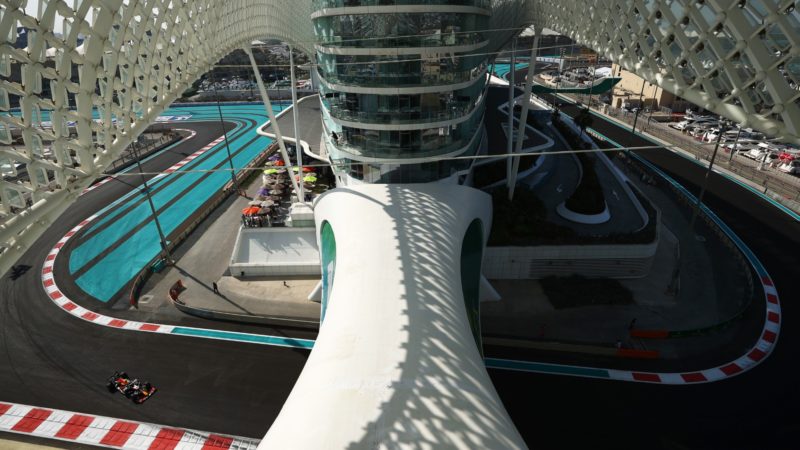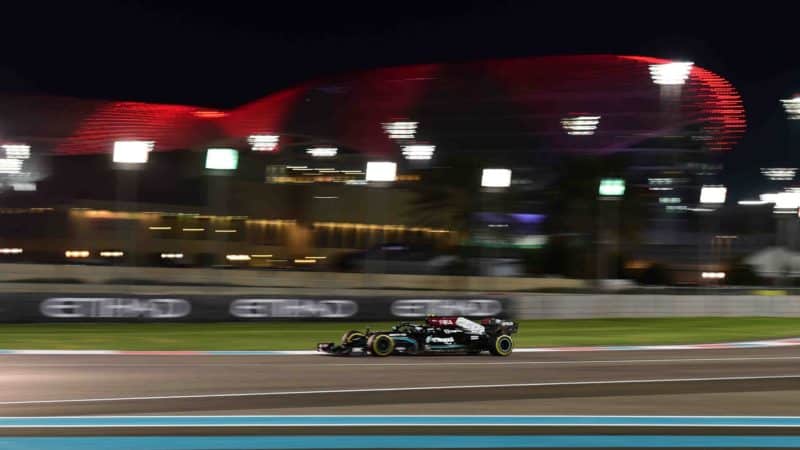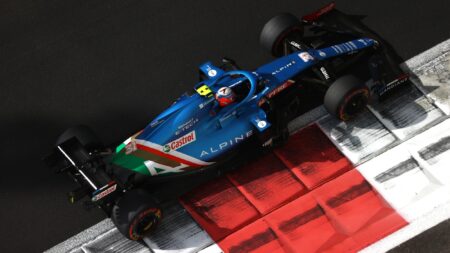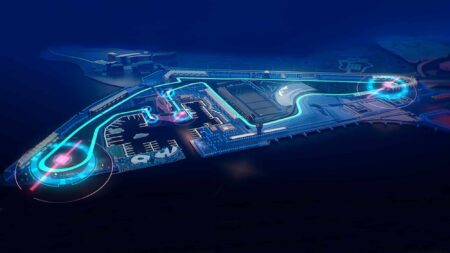Vietnam was the first circuit designed by this principle but never got to show what might have been. Saudi Arabia’s Jeddah Corniche Circuit was the first F1 circuit actually raced on to have been influenced by simulation, and the new changes at Yas Marina have followed suit.
The changes aim to improve the show by promoting closer racing by allowing cars to follow one another more easily. They have also taken into account the rule changes arriving next season with the next generation of cars.
“We have been in talks with Formula 1 for several years now about different options and what’s the right balance to achieve what we want to do which is more exciting racing, more opportunities to overtake and closer wheel-to-wheel racing. We had aligned with Formula 1 on an approach and on a design and we went straight into the approval process with the FIA and into execution right away.
“When we focused on the challenge that we’re trying to address, we zoomed in on the three areas and we ended up making the changes. It’s a challenge that we had, understanding the current rules and obviously the new rules that are coming in next year, and designing a track that is meant to address these changes.
“All of the changes were based on data and on simulations. Formula 1’s role in working with us and coming up with solutions was very much reliant on the current technology that’s out there, ability to run different simulations to ultimately test these enhancements in the simulator before we go and invest a significant amount.
“We will constantly monitor and when the new regulations come in, we will see if there’s any additional enhancements that we will make”
Changes include the removal of two slow-speed chicanes on the circuit. The original Turns 5 and 6 have been taken out and the second sector now begins with a hairpin onto the long back straight.
Likewise, the original Turns 11, 12 and 13 at the end of the second DRS straight no longer exist and a banked hairpin corner leading to the hotel section has replaced it.
The final sector has had several corners adjusted, and the new Turns 12, 13, 14 and 15 have been opened up and negative camber taken out in order to allow cars to follow each other more closely.
All will hopefully combine to create a race that is much closer than in recent years according to Al Noaimi.
“We evaluated some of the areas that we’re seeing are impacting the wheel-to-wheel racing and the opportunities for the drivers to stay close to each other. Certain decisions were very much based on the simulator.
“The Marina corner at the entry of the Marina section is now going to be a banked corner. We worked with Formula 1 and simulations to determine what is the right banking for that corner and it’s based on the speed of the vehicles arriving at that corner, what’s the exit speed you’re looking at and what’s the optimal way for them to enter into the hotel complex?

Several changes, especially in the final sector underneath the hotel will hopefully allow cars to follow one another more easily
Bryn Lennon/Getty Images
“We tested out different grades of banking and ultimately we ended up going with what we felt was the right gradient that gives us the highest benefit, and any [further] increase in gradient would not really yield any improvements in the racing, so that’s kind of the methodology we followed; a very much data-based analysis of simulations and how it will impact the racing. It’s getting the right balance, you know?
“Our analysis has pointed out some of the sharp corners were really breaking up the momentum and stopping the drivers from sitting close to each other, the negative camber corners that were leading to a lot of slippage in the tires and just weren’t creating the right opportunities for the driver and really fight for position changes.



